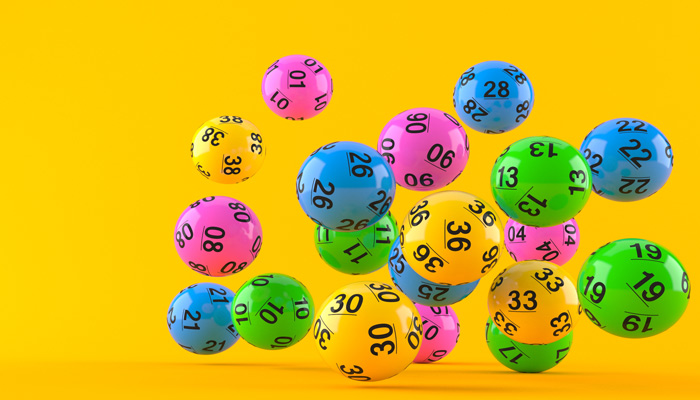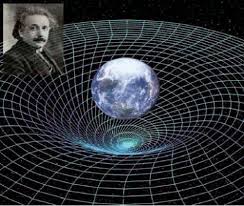Next The Essay of the Book The Price of Luck.
Recommended for after reading the book.
When we flip a coin, we have a 50% chance that it will come up heads or tails as we all know, but no one knows what we are going to get because we only mean in terms of probability. It is what we call chance, random, because it does not depend on us but on that pure free will, on a “luck”, good or bad, since it is a relative factor depending on the observer and the players in the game.
However, everything has a why and every result is a function of the state or progression of some parameters under certain conditions and that result is, itself, part and progression of other results. Over time, the human being has been deciphering behavior and consequences based on different data, translating them into formulas and mathematical equations. We have achieved this even in chaotic procedures generating algorithms that follow a pattern.
A non-deterministic system is one in which the result has been influenced by chance. The determinist is, therefore, the one that we can know with certainty the result since chance is not involved. But…
What if chance itself was a deterministic system? I am sure that would be the case if we had the necessary resources to monitor their follow-up. What we have not yet done has been discovering that chance in the form of luck in people to go to a more practical and closer field. Someday it will be achieved, but the unraveling of this mystery is in the hands of the own chance of progress, paradoxically.
However, there would be an important <but>: Own manipulation and observation of that progression to solve the equation would cause the result to vary; therefore, we would be falsifying the final product by our intervention.

Let's think now of some aspects of quantum physics where the latter mentioned is experienced:
Long ago it was thought that the atom was like the basic bricks that built matter and that is why it was called an elementary particle, that is, there is nothing smaller. Over time, subparticles, particles of which the atom was made, were discovered and the study of all those particles gave rise to the complexity of quantum mechanics. The physics down there does not respond to the laws we know of physics that we see on our scale. It is very particular.
Heisenberg showed us that at the quantum physics scale, position and linear momentum could not be determined at the same time, that is, the impossibility that certain pairs of observable and complementary physical quantities are known with arbitrary precision. If the interest in knowing the position of the particle was fixed, it became more difficult to know its mass and speed. On the contrary, if we want to know the mass and the speed, we cannot know its position. As if that physics rebelled against the observers so as not to reveal all the information. As we have previously mentioned, we can affirm that observation itself alters “reality”; different if it is observed or not, like the well-known Schrodinger's Cat experiment.
Physicist E. Schrodinger devised an imaginary experiment to explain the highly anti-intuitive behavior of quantum mechanics. This consisted of putting a cat in a closed box with a poison and a device with a radioactive particle that has the probability of disintegrating in a given time and releasing the poison. Until we open the box, we can say that the cat is alive and dead at the same time. Only when we open the box and observe can we confirm its status. We could say that our observation is what determines reality. This can also lead us to think that our reality could be fixed by someone superior when they observe us.
One of the differences from quantum physics to Newtonian physics (also named after conventional physics in honor of the great physicist Newton) is that while the latter moves analogically on a large scale (like planets spinning around a star), in quantum physics the particles move in determined quanta of energy (hence its name).
Quantum mechanics is never based on fixed results but on probabilities of results. Other interesting features are:
- Wave-particle duality. - Sometimes we see its behavior as a wave and other times as a particle with experiments such as passing light beams through slits to see the result reflected on the wall. Sometimes the particle beam behaves like a corpuscle and other times like a wave. Here we also experience the pattern change by interference whether or not we observe the experiment.
- The quantum tunnel.- That is, if there is a barrier near particles, there is also a probability that the field of action of those particles (due to their wave condition as well) remains on the other side of the barrier, thus being able to cross that limit in an incomprehensible way. So it is said that a particle can be on two sides at the same time, on one side and on the other side of the barrier.
- Interlacing.- The change of state of a particle affects the others immediately regardless of the distance that separates them. Therefore, there may be links that are not altered by the space and time that separates them. Many links produced by this quality may still be undiscovered.
 Science and Religion
Science and Religion. -
If we ask a religious what was before the creation of the Universe, he will tell us that Eternity. When we ask the same question to a scientist, he will explain that before the supposed Big Bang, the great explosion before the beginning, there was nothing; that is to say, neither space nor time had been created yet (associated with each other as Einstein taught us), therefore, we could say that there was not yet time. What is the absence of time if not Eternity itself? We have reached the same point in the religious response; We have converged Science and Religion. The two will understand each other one day, although there is still time for that. However, both will also have a reserved space to house what the other cannot yet explain.
Continuing with this convergence between science and religion, let's think about the priest's thoughts about Mathematical Compensation in life and quantum behavior. Let's look at the latter first.
The particles are in a state, let's say "floating"; they can have one behavior or another and until they are observed, we could say that they are in several states at the same time. It is at the precise moment that they are observed that we discover their state. But even so, we cannot know everything because if we fix its position we cannot fix its amount of movement (mass and speed) and if we fix the latter we cannot know its position, as we explained previously. Therefore, the information is revealed to us only when we make the observation, but not all. It is as if particle physics always has an ace up its sleeve. Curiously, that reserved ace in the sleeve will depend on the last option that is taken or the one that is going to be taken later. All matter is made up of subatomic particles, therefore, all bodies are subjected to all that mass welter that happens down there in that micro world. This, translated to a level of daily life and meditated from a religious point of view, could lead us to think that, when making a decision, the different alternatives are there and that an act will have different consequences and may change along the way if the one who executes it is going to do it with a good intention or bad intention. It is as if the particles travel to their next future, coming and going to see the consequences and position their state depending on the intention of the individual. An example could be the GCP (* 1).
GCP is the project or experiment called Global Consciousness Project carried out from Princeton University since 1998. It is based on a random generator of numbers, zeros and ones based on a quantum tunnel effect. There are monitoring points scattered all over the planet where the data is being recorded.
The funny thing is that certain changes are detected in the pattern of the number beams when people's consciousness or feeling is affected by some great disaster. It is as if all those individual energies align and exert an effect on that quantum chance. It was verified in the attack of 9/11 in New York or in 11-M in Madrid and in many others where there are a large number of people affected that produce this global effect. But more curious still, is that the pattern change of that random number beam occurs just before the catastrophe happens.
Let us now analyze the religious thinking regarding the compensation of mathematical probability.
With all the laws at stake, mathematics, those of quantum mechanics and some others ... it can be empirically concluded with the following rules of the game:
- Laws tend to push you off limits. On the edge of the extreme, both upper or lower, as considered good or considered bad, the laws make it recover its position by moving away from that edge in any field.
- Groups are constantly forming and these are always compensating through their members; in addition to the influence of other groups around or in the interior in its corresponding measure.
- An individual follows his own compensation, as if he were a group in himself, composed of an almost infinite number of parameters of which they form their person and acts in all aspects.
- The individual, in turn, is affected by the compensation of the groups to which he belongs (friends, family, acquaintances, coworkers, environment where he lives, etc. until reaching the group of the whole of humanity and even beyond ).
- New groups are constantly being created, therefore everything is self-regulating. From the moment two people meet, both will influence each other on the probability of events. A new group has just been created.
- If the groups of elements with something in common were spheres, all the compensations would follow a hierarchy as if they were circumscribed spheres where the probabilities within a sphere are also affected by the next superior and inferior sphere in a measure proportional to their proximity. Giving priority to the variables of the sphere itself and receiving impact from the others in its measure. (*2)
- A job well done counts a lot for the results, but it can be reduced or increased probability of success depending on other factors:
▪ Options increase with: dedication, effort, sacrifice, helping someone selflessly, pain endured, pain caused from the outside, honesty, humility, love and respect for others, being a victim of injustice, etc. ...
▪ Decrease options to get what you want with: disinterest, opportunism, skimpy, selfishness, pride, arrogance, envy of others, ...
In addition to the aforementioned, and the impact of other groups with an intensity proportional to the proximity in the connection, all these outcome options also enter the compensation roulette based on their corresponding success and failure history; for this part, if you have had a series of successes in a row you can be compensated for the following being a failure, but all the aforementioned conditions will also have their weight for the verdict.
This applies to both micro events and large magnitude events. In the end, the famous law of large numbers prevails and the numerous micro results are adjusted and shape the final result. Like pieces of a great puzzle, everything will fit together.

Many ancient cultures have caused suffering and made sacrifices. In their civilizations, they have had many years to empirically verify that after suffering comes pleasures, or at least periods of peace. Always attributed to the Gods, in the form of offerings to them. This may not be the reason for the rule to be followed, but if it gives some results ... after all, it is the laws that the Creator has taken into account for the articulation of the world
In one part of the novel it is said that the rich could buy time. Although little, they scratched a little time in their bodies with respect to others and that was worth exchanging for something of their fortune. This time lag they were experiencing was based on Einstein's laws (ceased to be theory long ago) of Relativity. In this phenomenon the dilation of time was appreciated when your body was subjected to high speeds, or to a gravitational attraction. The higher the speed or gravity values, the greater the slowdown in time compared to the outside. In order for time to slow down to the maximum, you would have to reach the limits. In the case of velocity, that limit would be the speed of light, and in the case of gravity, it would be infinite gravity (almost that which occurs in the vortex of a black hole).

(*2)
To explain the concentric spheres we could describe many examples from everyday life. One of them could be a soccer player. The player obtains sporting results depending on his dedicated effort and his good technique. That would be a sphere with the group of elements that encompasses his personal good work and dedication. However, that same sphere is made up of other spheres, which we could call sub-spheres, such as, for example, the number of hits on penalty kicks over all those thrown, or the well-executed headshots, and thus, a great etc. with everything we want to analyze and put in the roulette of probabilities, in the roulette of compensations. The sub-spheres balance themselves according to their parameters as elements of their whole. Then there is a balance of the major sphere that encompasses the sub-spheres and is balanced based on everything inside. However, at some point, there is an influence from a different outer sphere with linkage; this, for the player, can be the games that his team has won and lost in a competition. The more times his team has won the more he will try to balance with a loss and that diminishes the chances of the player winning despite doing very well individually. There would be another personal sphere of the player where the set of events that have gone well, or not so well, would be in other areas of his life that are influencing as well. The team would be based on the spheres of each of its players, but there would be other influential ones, such as that of the team president's investment business. Even the personal life of its president, or of its coach with its ups and downs, will influence the probability of success of the team and therefore each of its players, thus mixing with that of each of them. There would still be outer spheres with less impact, but with their specific percentage of influence as fans of the team with their corresponding shouts of encouragement to the team and their wishes to a greater or lesser extent that their team wins. Each of those people will have their own probability of deserving a joy that their team wins or a sadness if they lose.
There are groups made up of elements everywhere dynamically constantly changing. If you know a new person, a new group of 2 elements has just been created that did not exist before; That new person may wish you good or evil, and the probability of their wish being fulfilled splashes your luck at a certain percentage of probability; percentage that did not exist before meeting that person but now has an effect on you, however small.
The entire planet is a large group with many elements, human beings between them and random variations occur on one side of the planet, in other countries over time, just as it happens in a test tube full of particles. only that the times of change and the factors are very different; however, all driven by the dynamic laws imposed on our universe. It is sad to think that for a group to be enjoying privileges it is almost necessary for another group to be on the other end having a hard time to keep a balance out of extremes of "all wrong" or "all right". This occurs in everything, both on the planet, in the universe, or inside the test tube as we said.
We can then intuit that, the more intense the good or the evil is about an element or a group and the longer the time without change of that state, the greater the probability that this change will arrive, tending to compensation and balance. However, other parameters will also influence as we have mentioned previously. Justice ends up taking place; maybe not when and how we want, but the laws that make all this work find the time to do it.

If we were able to create a Universe from scratch (someday we will be), I think we would apply this logic to create laws that balance events; that there be justice between heads and tails based on certain parameters, without taking away freedom from created beings. However, we are made in the image and likeness of our Creator and I am convinced that we are destined to be Creators.







